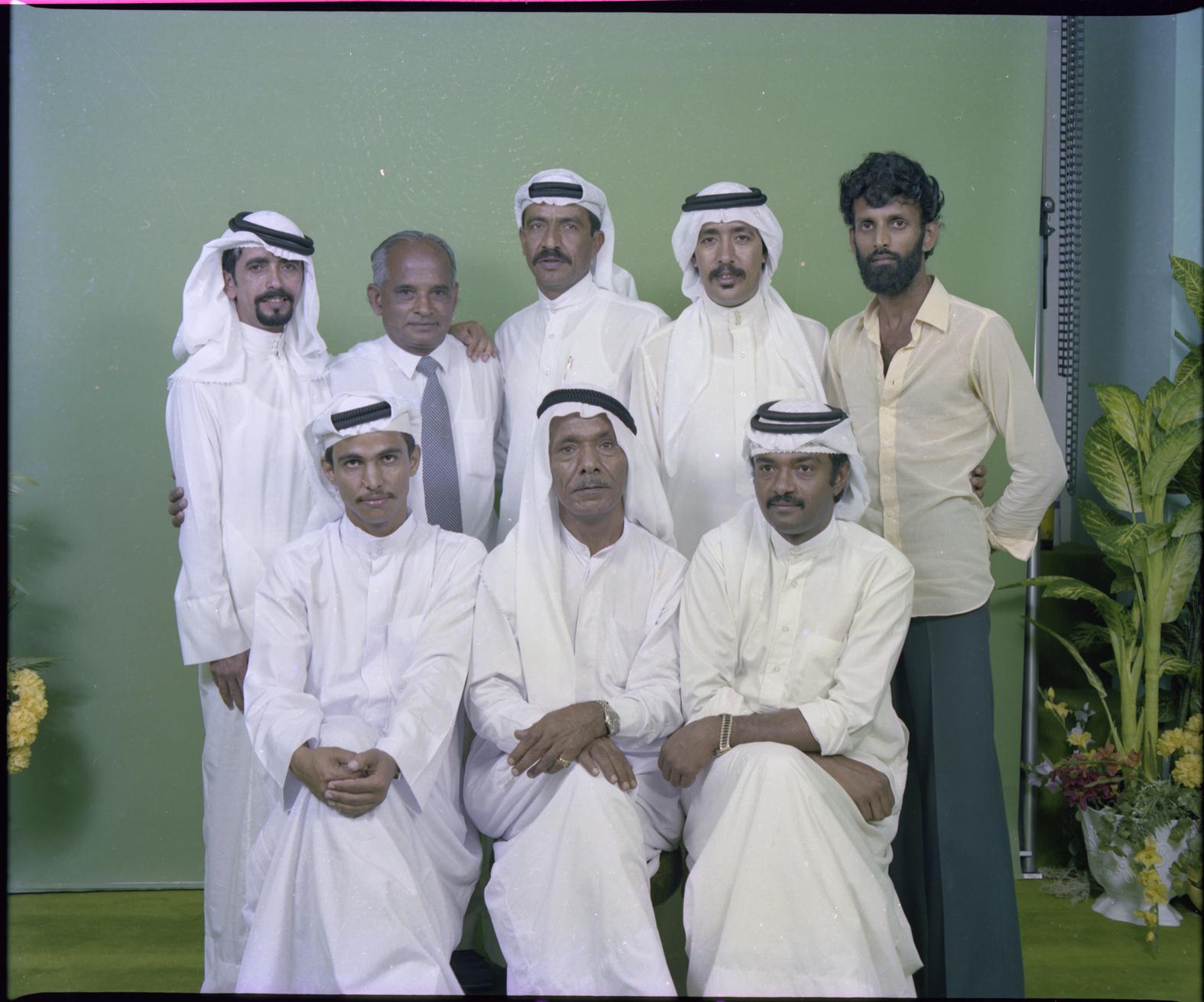This article originally appeared on VICE Arabia
When I enter his studio, Ammar Al Attar is arranging small boxes and envelopes stacked on his desk, along with cassettes with the work of his favourite musicians. The rest of the space in the Sharjah Art Foundation is covered with dozens of photographs – old and new. For the past two years, the documentary photographer has worked on a project titled Aks al Zaman (Reverse Moments). His aim is to chart the history of early Emirati photography by examining the development of the country’s oldest photography studios – showcasing their founders and surviving archives.
Videos by VICE
The process involves Ammar interviewing the photographers or their families in search for first-hand accounts of their experiences within the scene. He also collects archival images – that includes printing undeveloped negatives – and scans them in an attempt to build a digital collection that will survive time. The 35-year-old hopes that Aks al Zaman will be the first comprehensive study of the evolution of art photography in the Emirates.

So far, Ammar has profiled about 20 studios, established by photographers from India, Pakistan, Iran and the Emirates. Some date back to before the UAE’s formation in 1971. His greatest challenge has been finding information about the work of influential photographers, who have either died or who moved away after closing their studios.
But with those he can easily trace, Ammar enjoys long interviews, where he learns about their professional ticks and tricks, and the cultural hurdles they faced at the time. He tells me that he wants his work to always be a “reflection of the topic, more than someone’s technique.”

So far, two photographers have been most central to the project: Prem Ratnam and Abdullah Murad. Ratnam, an Indian photographer from Kerala, came to the UAE in the 1970s. He had initially planned to work in the oil industry, but ended up working with his uncle in a photography studio in Abu Dhabi. In 1982, in partnership with United Colour Film – the first photo printing service in the country – he opened his own studio in Sharjah. Ratman has contributed a significant portion of his archive to the project – a series of both personal portraits and shots of ancient landmarks.
“As for Murad, his work represents a major turning point in the photography and film industry in the UAE,” claims Ammar. Murad studied in Europe and returned to the UAE in the early 1970s. When he came home, he found that photographers were sending their negatives to London or Lebanon for acidification, forcing them to wait months for their pictures to be printed, if at all. So he decided to open the first local colour lab in Ajman. “He changed the concept of photography and encouraged many people to start taking it seriously.”

The majority of Ammar’s photos, though, come from a collection he bought on the internet. He doesn’t know who the photographer is but, going by the pictures, he thinks it belongs to a British woman who came to the UAE some time between 1972 and 1976. The stack includes photographs from Jordan and Saudi Arabia from the 1960s and even photographs from Palestine dating back to the 1950s. The unidentified photographer also shot the construction of the Al Shindagha tunnel in Dubai – the city’s oldest and busiest tunnel.
“The project is about more than just photography,” Ammar tells me. “It is a chance to preserve the region’s rich cultural history.” His ultimate goal is to establish an institution dedicated to protecting the photo history of the Emirates and the Gulf, “because history retold in pictures is the most honest reflection of the past.” Ammar also wants to share his entire collection in an online database that is accessible to everyone. “I don’t want to monopolise these stories,” he says. “I want to share them with people, because these are memories worth spreading.”
Scroll down to see more photos from Aks al Zaman.






More
From VICE
-

Screenshot: Bethesda Softworks -

Ted Mead/Getty Images -

Oleg Breslavtsev/Getty Images -

